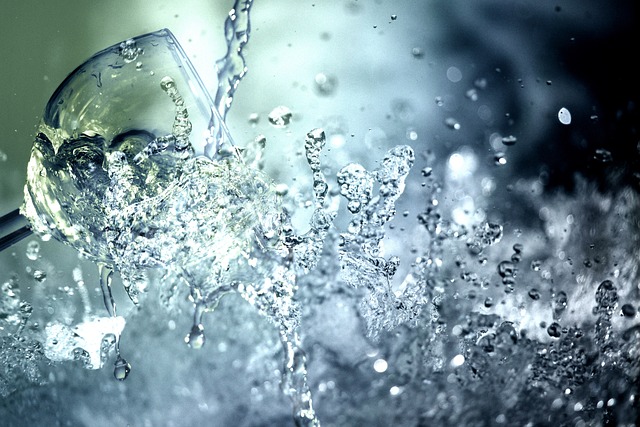Contrast water therapy, an ancient practice involving alternating hot and cold immersions, is a powerful tool for athletes seeking optimal post-exercise recovery. By stimulating blood flow, accelerating muscle repair, reducing inflammation, and promoting relaxation, this method enhances holistic athletic recovery. Through increasing circulation and delivering oxygenated blood to muscles while removing metabolic waste, contrast water therapy expedites healing, improves flexibility, and reduces joint stiffness. Ideal as a post-workout practice, it can speed recovery and prepare athletes for future training sessions.
“Unleash your body’s potential with contrast water therapy—a game-changer in sports recovery. This ancient practice, involving alternating hot and cold immersions, offers powerful benefits for athletes seeking relief from soreness and fatigue. Our article guides you through the science-backed mechanics behind contrast therapy, its profound effects on muscle recovery, and practical tips for implementation. Discover how this simple yet effective technique can revolutionize your post-workout routine and enhance overall athletic performance.”
Understanding Contrast Therapy: A Powerful Tool for Sports Recovery
Contrast therapy, a powerful tool in the realm of sports recovery, involves alternating between hot and cold treatments to stimulate blood flow and enhance muscle repair. As a form of contrast water therapy for sports recovery, athletes immerse themselves in hot water followed by cold, or vice versa, in quick succession. This technique has gained popularity among folks seeking effective ways to reduce soreness and fatigue post-intense physical activity.
The benefits are multifaceted: it improves circulation, helping oxygenated blood carry essential nutrients to sore muscles while removing metabolic waste products. Contrast therapy also reduces inflammation, expedites healing, and promotes a sense of relaxation, making it a game-changer for athletes looking to optimize their recovery processes.
How Contrast Water Therapy Works to Alleviate Soreness and Fatigue
Contrast water therapy, a practice that involves alternating between hot and cold water, has gained popularity as an effective method for reducing muscle soreness and fatigue, especially among athletes. This ancient technique taps into the body’s natural response to temperature changes, offering a holistic approach to recovery after intense physical activity.
When you immerse yourself in hot water, blood vessels expand, increasing blood flow and delivering essential nutrients to sore muscles. The heat also helps relax tight muscle fibers and reduces inflammation. Subsequently, switching to cold water causes blood vessels to constrict, reducing swelling and cooling down the tissues. This contrast stimulates circulation, accelerating the removal of metabolic waste products that contribute to fatigue and soreness. As a result, athletes often report improved flexibility, reduced joint stiffness, and enhanced overall recovery after sessions of contrast water therapy for sports recovery.
Scientific Evidence Supporting the Benefits of Contrast Therapy
Contrast therapy, particularly involving alternating between hot and cold treatments, has gained significant attention in the field of sports medicine due to its promising benefits for athletes’ recovery. Scientific studies have explored the impact of this ancient practice on reducing muscle soreness and fatigue, with compelling results. Research suggests that contrast water therapy for sports recovery can accelerate the removal of metabolic waste products from muscles, such as lactic acid, which is often responsible for post-exercise soreness.
The mechanism behind its effectiveness lies in the body’s response to temperature changes. Hot temperatures cause blood vessels to dilate, increasing blood flow and oxygen delivery to tired muscles. Conversely, cold exposure causes vasoconstriction, reducing inflammation and slowing blood flow, which helps alleviate pain signals. This dual action provides a comprehensive approach to recovery, making contrast therapy an appealing option for athletes looking to enhance their post-workout routine and speed up recovery between intense training sessions.
Implementing Contrast Therapy: Tips and Best Practices for Athletes
Implementing Contrast Therapy involves alternating between hot and cold treatments, typically using water at varying temperatures. For athletes looking to enhance their recovery process, this method is a game-changer. Start with a warm bath or shower to relax muscles and increase blood flow. This can be followed by a quick dip in cold water, which helps constrict blood vessels, reducing inflammation.
Best practices suggest dedicating around 10-15 minutes to each contrast cycle, repeating this process several times over the course of an hour. Ensure the temperature differences are noticeable but comfortable; hot water should be around 38-42°C (100-107°F), while cold water should be between 15-20°C (59-68°F). After a contrast therapy session, athletes may experience a heightened sense of alertness and reduced soreness, making it an ideal post-workout practice for speeding up recovery and preparing the body for future training sessions.
Contrast water therapy has emerged as a powerful tool for athletes seeking to enhance their recovery process. By combining hot and cold temperatures, this method effectively reduces muscle soreness and fatigue, allowing athletes to return to peak performance faster. With scientific evidence backing its benefits, contrast water therapy is a game-changer for sports recovery, offering a simple yet effective solution for athletes to optimize their training regimens and overall well-being.
